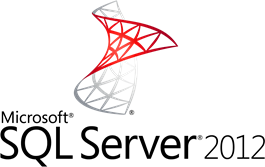by Dmitry Kirsanov
26. August 2013 05:29
 As a note to system administrator – what to do, when your one and only administrators account is locked on your SQL Server.
As a note to system administrator – what to do, when your one and only administrators account is locked on your SQL Server.
You need to perform 5 quick steps. More...
by Dmitry Kirsanov
24. February 2013 14:23
 In SQL Server 2012, we have 4 main options for High Availability: Database Mirroring, Failover Clustering, Availability Groups and Log Shipping. All but Availability Groups (AG) are available in SQL Server 2008 as well. Today we’ll review Availability Groups and how to create and use them.
In SQL Server 2012, we have 4 main options for High Availability: Database Mirroring, Failover Clustering, Availability Groups and Log Shipping. All but Availability Groups (AG) are available in SQL Server 2008 as well. Today we’ll review Availability Groups and how to create and use them.
Before we begin, make sure you understand what is Windows Server Failover Cluster (WSFC). I covered it almost a year ago for Windows Server 2008 R2 and SQL Server 2008 R2, and you’ll need WSFC in order for AG to work.
A few points about Availability Groups to make sure they are what you are looking for:
- Availability Groups are not share-nothing scalability option. They are using shared storage, such as storage area network (SAN), although it’s not a requirement. We’ll speak about share-nothing scalability later.
- For AlwaysOn Availability Groups, you need SQL Server 2012 Enterprise edition or higher. Business Intelligence edition or Standard won’t do.
- AG provide failover with up to 5 readable nodes.
- AG provide you with something like load balancing option, but AG is not NLB. Also, all nodes can work independently, i.e. you can still connect to them to retrieve information. Only the primary node can change information in the database.
- AG does not require working in the same IP subnet, but it requires Active Directory domain. This means, that you can have geographically remote nodes participating in one AG, but they must be members of the same AD domain.
In case of multi-subnet cluster, you’ll have to implement the file replication solution on your file servers to synchronize the data. - AG is database-level, as opposed to node-level failover cluster. AG serves group of databases, unlike the simple database mirroring, with 4 replicas instead of one.
Overall, the AlwaysOn Availability Groups are conceptually similar to database mirroring, but provide more advanced functionality and security.
More...
by Dmitry Kirsanov
15. February 2013 23:00

If you are developer, then you work with relational databases as well. And if you work in a Windows world, most likely your system of choice is Microsoft SQL Server.
With every new DBMS release we find something that changes the way we solve common problems in new solutions. SQL Server 2012 is no exception.
In SQL Server 2012, instead of just enhancing the productivity and robustness of the server, Microsoft solved a number of architectural problems we previously had to deal with in our applications when working with SQL Server.
Problems like saving files in databases, load balancing database clusters and simple restoration of data, finally got the minimum viable solution, which should only improve with time.
More...
by Dmitry Kirsanov
15. October 2012 06:04
Today, if you’ll visit the MSDN Labs, you won’t find there much about Microsoft SQL Server Reporting Services. The reason is simple – Microsoft doesn’t consider reporting to be the edge technology. The frontier of changes and fountain of creativity is somewhere else. Usually what you see in there is something that is complex or very important for Microsoft. Neither is a category for reports.
However, I recognize the trend, which is, although relatively distant, could shift the position of Reporting Services and perhaps make it more widespread, potentially adding more jobs to the market.
More...
by Dmitry Kirsanov
17. November 2011 17:18
 According to Microsoft, you are not able to change your base currency in Microsoft Dynamics CRM 2011, the same as it wasn’t possible in version CRM 4.
According to Microsoft, you are not able to change your base currency in Microsoft Dynamics CRM 2011, the same as it wasn’t possible in version CRM 4.
However, that’s not true.
Imagine, that during the installation of Microsoft Dynamics CRM 2011 server, you’ve set your currency to EEK (Estonian Krona). However, then your country adopted Euro and there is no EEK anymore. According to Microsoft, you have to delete your organization and export it’s data to new one.
It is considered a big no-no to hack into the CRM database, yet in order to change the base currency you will have to do it. Here is how:
More...